1) Reglementări
Reglementarea stabilește, de asemenea, cerințe de formare, interdicții de utilizare și interdicții de introducere pe piață în funcție de GWP (potențialul de încălzire globală) și de aplicație, reduceri ale cantităților produse (cote) și cerințe: calificare, echipamente obligatorii și prevenirea emisiilor, cu obligația de a efectua verificări ale scurgerilor la instalațiile care conțin gaze fluorurate cu efect de seră.
Secțiunea specifică privind F-Gaze referitoare la verificarea scurgerilor:
Capitolul II articolul 4 din Regulamentul (UE) nr. 517-2014 specifică frecvența verificărilor în funcție de încărcarea în tone de CO2 echivalent a instalațiilor.
Încărcare ≥ 5 t de CO2 echivalent: cel puțin o dată la 12 luni sau numai o dată la 24 de luni dacă sunt echipate cu un detector de scurgeri fix.
Încărcare ≥ 50 t de CO2 echivalent: cel puțin o dată la șase luni sau numai o dată la 12 luni dacă instalația este echipată cu un detector fix de scurgeri.
Încărcare ≥ 500 t de CO2 echivalent: cel puțin o dată la trei luni sau numai o dată la șase luni dacă instalația este echipată cu un detector fix de scurgeri.
Operatorii sunt obligați să instaleze un detector fix de scurgeri care să alerteze operatorul sau compania de întreținere în cazul unei scurgeri pentru instalațiile cu o încărcătură de agent frigorific egală sau mai mare de 500 t de CO2 echivalent (de exemplu, 128 kg de R-404A).
-
- Pentru sisteme staționare (refrigerare, climatizare, pompe de căldură, stingerea incendiilor)
-
- Pentru mașini cu ciclu Rankine și aparate de comutare electrică instalate după 01/01/2017

Pentru statele membre ale Uniunii Europene, pe lângă Regulamentul privind gazele fluorurate, pot exista reglementări naționale mai stricte.
2) Detectarea scurgerilor conform standardului EN 378:
În plus față de reglementările de mediu, standardul european EN 378 oferă un supliment pentru a asigura siguranța persoanelor.
Acesta prevede că sălile de mașini trebuie să fie echipate cu detectoare pentru a asigura siguranța tuturor utilizatorilor.
Pentru gazele explozive sau periculoase, pragul de detectare este stabilit la mai puțin de 20% din limita inferioară de inflamabilitate, iar detectoarele de amoniac trebuie să declanșeze ventilarea, o alarmă și să deconecteze alimentarea externă cu energie electrică.
3) Tipuri de detectare: detectare directă (detectoare portabile; detectoare fixe de scurgeri) și detectare indirectă (monitorizare continuă prin intermediul unui sistem expert)
Există mai multe tipuri de detectare:
-
- În primul rând, metodele directe permit verificarea scurgerilor la fața locului și sunt utilizate pentru verificări periodice (detectoare portabile) sau continue (detectoare fixe de scurgeri). Detectoarele portabile pot fi utilizate pentru localizarea scurgerii.
-
- În plus față de această metodă și pentru a permite monitorizarea completă a funcționării instalației, au fost dezvoltate metode indirecte. Utilizarea senzorilor care efectuează măsurători regulate împreună cu calcule algoritmice permite amplasarea acestui tip de dispozitiv în interiorul instalației pentru a identifica și monitoriza comportamentul acesteia.
Pentru a respecta Regulamentul privind gazele fluorurate, inspecția fizică a instalației trebuie efectuată cu un detector portabil. Conform prevederilor Regulamentului european 517-2014, frecvența verificărilor poate fi redusă[1] dacă instalațiile sunt echipate cu un detector de scurgeri fix sau un sistem bazat pe metode de măsurare indirectă.
Astfel, pentru a reduce frecvența inspecțiilor fizice, este posibilă utilizarea sistemelor de detectare staționare, cunoscute sub denumirea de „detector fix de scurgeri” sau „sistem de detectare staționar”, și a sistemelor de detectare cu măsurare indirectă instalate pe unitatea de răcire, care permit monitorizarea continuă a instalațiilor și declanșarea unei alerte în cazul apariției unei scurgeri.
Unele țări, precum Franța și Belgia, au adoptat posibilitatea verificării indirecte a scurgerilor cu sisteme de detectare indirectă monitorizate continuu (a se vedea secțiunea 5).
Astfel, cele trei metode de detectare a scurgerilor sunt complementare: ele garantează conformitatea cu Regulamentul F-Gas 2, contribuind la reducerea scurgerilor și, prin urmare, la protejarea mediului, garantând în același timp siguranța persoanelor.
4) Tehnologia senzorilor
Există trei forme de tehnologie a senzorilor: semiconductori (sau senzori cu diode încălzite), senzori electrochimici și senzori cu infraroșu. Alegerea senzorului depinde de gazele sau fluidele care trebuie detectate.
a) Senzori semiconductori: pentru HFO, HFC, CFC, HCFC
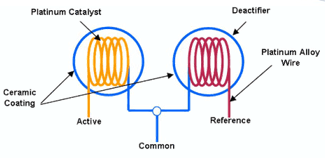
Această tehnologie are avantajul de a fi cea mai ieftină. Cu toate acestea, este sensibilă la temperatura ambiantă, umiditate, solvenți, agenți de curățare, HC (propan) și NOx (oxizi de azot).
1 A se vedea tabelul de la pagina 1
Senzorul semiconductor, cunoscut și sub denumirea de senzor de oxid metalic (MOS), detectează produsele toxice, combustibilii și agenții frigorifici. Este sensibil la modificările concentrației de gaz (scăderea concentrației de oxigen), umiditate și schimbările de temperatură. Sensibilitatea sa este redusă și trebuie calibrat. Este o tehnologie economică, cu o durată de viață lungă (aproximativ cinci ani).
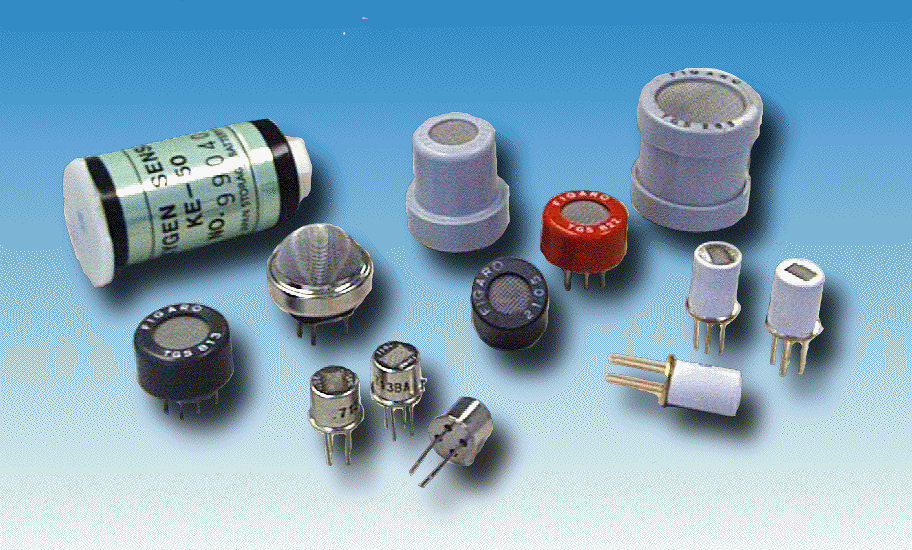
copyright bacharach
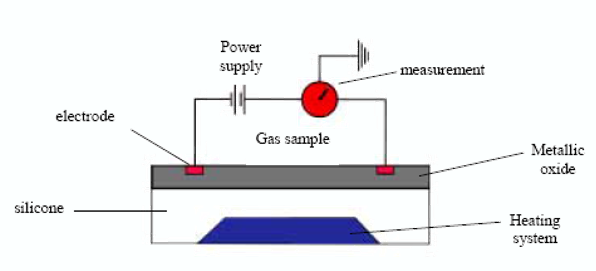 Principiul de detectare: un film subțire de oxid metalic este depus pe o suprafață de silicon. Reacția catalitică de oxidare în contact cu gazul țintă și suprafața încălzită de oxid metalic modifică rezistența electrică și alteră conductivitatea. Această modificare a rezistenței este corelată cu concentrația de gaz măsurată.
Principiul de detectare: un film subțire de oxid metalic este depus pe o suprafață de silicon. Reacția catalitică de oxidare în contact cu gazul țintă și suprafața încălzită de oxid metalic modifică rezistența electrică și alteră conductivitatea. Această modificare a rezistenței este corelată cu concentrația de gaz măsurată.
b) Senzori electrochimici: NH3
Această tehnologie de senzori este utilizată pentru detectarea NH3. Este o tehnologie ultraprecisă, care asigură siguranța persoanelor datorită detectării la concentrații scăzute ale acestui produs toxic.

Această tehnologie de senzori este utilizată pentru detectarea NH3. Este o tehnologie extrem de precisă, care asigură siguranța persoanelor datorită detectării concentrațiilor scăzute ale acestui produs toxic.
Această tehnologie este potrivită pentru o gamă largă de gaze toxice și este foarte precisă la concentrații foarte scăzute de ppm. Răspunde rapid la o scurgere și este o tehnologie selectivă care caută numai gazul țintă. Prin urmare, nu există riscul de sensibilitate încrucișată. Această tehnologie trebuie calibrată în funcție de gazul țintă, iar senzorii au o durată de viață de trei până la cinci ani.
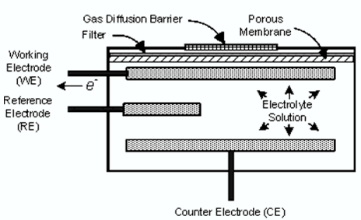
Senzorul este format dintr-un electrod de lucru, un contraelectrod, un electrod de referință și un electrolit. Senzorii electrochimici funcționează ca bateriile. Când gazul țintă este prezent, o reacție chimică pe electrodul de lucru generează o mică sarcină electrică între doi electrozi, proporțională cu concentrația de gaz.
c) Senzori cu infraroșu: detectarea HFO, HFC, CFC, HCFC, NH3, propan, CO2.
Tehnologia senzorilor infraroșii este extrem de sensibilă. Poate detecta o gamă largă de agenți frigorifici, fiind complet insensibilă la alte produse, și are o durată de viață lungă. Poate detecta HFO, HFC, HCFC, CFC, NH3, propan (R-290) și CO2.

Senzorul cu infraroșu este extrem de sensibil, cu o sensibilitate încrucișată foarte redusă față de alte gaze. Această tehnologie nu este sensibilă la poluanți (silicon, plumb etc.) și se poate calibra automat. Timpii de răspuns sunt scurți, cu praguri de detectare posibile la concentrații foarte scăzute (sensibilitate de 1 ppm). Este o tehnologie de detectare extrem de precisă, deși puțin mai scumpă; durata medie de viață a senzorului este de cinci până la șapte ani.
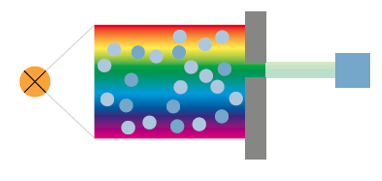
Senzorul este format dintr-o sursă de lumină, un filtru anti-interferență, un detector și o cameră în care gazul țintă este difuzat după ce a fost aspirat. Numai culoarea verde a fasciculului de lumină este filtrată și analizată prin măsurarea intensității sale. Dacă este prezent un gaz, culoarea verde a radiației luminoase este redusă cu o cantitate măsurabilă.
5) Dispozitive de detectare și descrieri
Detectoare portabile:

Scurgerile sunt semnalate printr-o alarmă sonoră și vizuală și un ecran de afișare. Acest tip de detector permite localizarea precisă a zonei de scurgere.
Înainte de fiecare utilizare, o verificare cu ajutorul unui produs precum mini-check, care simulează o scurgere calibrată de R-134a de 5 g/an, permite verificarea calibrării dispozitivului.
Detectarea bulelor:
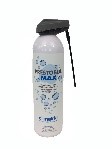
După căutarea unei scurgeri cu un detector portabil, se poate utiliza un aerosol, cum ar fi Prestobul, pe conductele unde se află scurgerea suspectată, pentru a identifica sursa prin prezența bulelor.
Detectoare fixe de scurgeri:
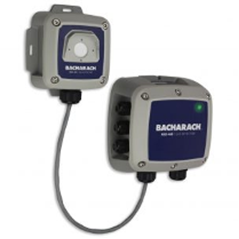
Detectorul de scurgeri staționar, cunoscut și sub denumirea de detector de scurgeri fix, este un detector de scurgeri de agent frigorific. În funcție de model, este un senzor-transmițător independent cu alarme, care poate fi utilizat fie ca detector autonom, fie conectat la un sistem de control (de exemplu, BMS) printr-o legătură Modbus. Acestea sunt, în general, echipate cu unul sau mai multe relee pentru a activa echipamente de siguranță externe, cum ar fi supape, ventilatoare, alarme generale etc. Acestea necesită instalarea de senzori, numiți și „sonde”, în conformitate cu caracteristicile specifice ale instalațiilor și ale fluidelor care trebuie detectate. Acestea trebuie selectate și adaptate la fluidele care urmează să fie detectate.
Poziționarea senzorilor:
Protejați de stropi de apă și de potențiale pericole, departe de zone cu curenți de aer sau ventilate (zone cu trafic intens și flux de aer puternic, zone de extracție (ventilator)) și departe de sisteme de identificare prin radiofrecvență sau de transmițătoare pentru aceste sisteme.
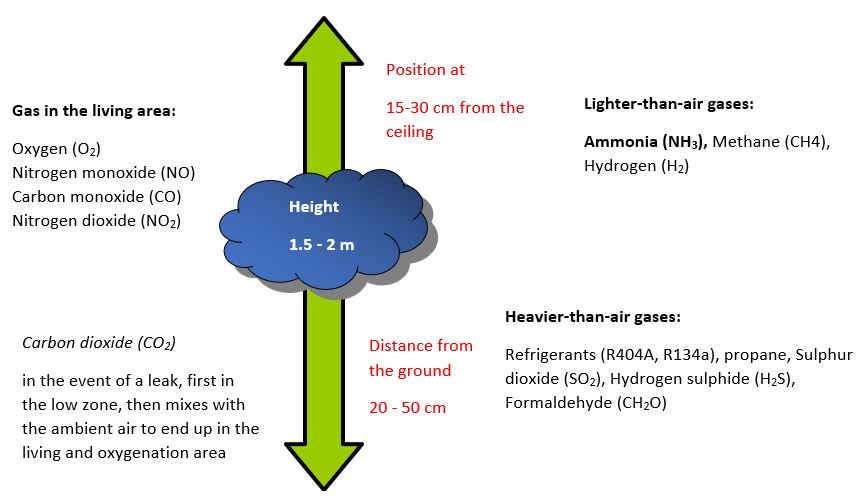
În interesul siguranței umane, poziționați senzorii în zona de locuit (oxigenare).
Predictiv integrat – DNI: autorizație belgiană + eficiență energetică
Cu rate medii de scurgere de aproximativ 20% până la 25% pe an, unitățile de condensare instalate în magazinele alimentare sau în industria alimentară necesită detectoare de scurgeri permanente pentru continuitatea proceselor, pentru a îmbunătăți performanța și a respecta reglementările de mediu.
Detectorul inteligent de nivel Matelex („DNI” – Detector inteligent de nivel) este un detector de scurgeri fix, brevetat, bazat pe metoda de măsurare indirectă. Această metodă implică analiza continuă a parametrilor de funcționare ai instalației. DNI, prin intermediul unui algoritm specific și al metrologiei asociate, învață așa-numita funcționare „normală” a unei instalații datorită analizei permanente a funcționării acesteia. Apoi identifică abaterile de la această funcționare și este astfel capabil să detecteze prezența unei scurgeri.
DNI, compatibil cu 120 de fluide și diferite tipuri de rezervoare HP (verticale, orizontale, înclinate), utilizează principiul vaselor comunicante pentru a măsura nivelul fluidului din rezervor fără a fi necesare modificări majore ale instalației. O coloană de cupru de 1″ 5/8, adaptată la geometria rezervorului, este cântărită cu un extensometru. Protejarea acestei coloane va permite instalarea acestui tip de metodă în exterior.
Analiza în timp real a datelor metrologice colectate privind greutatea/presiunea/temperatura și luarea în considerare a datelor termodinamice ale fluidului utilizat vor indica prezența scurgerilor la nivel local (contact uscat pe BMS) sau la distanță (monitorizare online Sentinelle, alerte prin e-mail). Scopul monitorizării continue este, prin urmare, detectarea timpurie a scurgerilor, permițând operatorilor să reacționeze mai rapid.
Pentru a asigura precizia măsurătorilor, se efectuează o verificare anuală pentru a înlocui lanțul de măsurare a greutății/presiunii și a calibra sondele de temperatură, astfel încât să se poată lua în considerare impedanța cablurilor și deriva sondelor PT100.
Există două tipuri de alarme, care permit monitorizarea continuă și feedback-ul esențial pentru funcționarea unui proces de refrigerare.
-
- Alarmă de nivel scăzut: similară nivelurilor staționare „Kubler” întâlnite la un număr mare de rezervoare, DNI permite monitorizarea continuă și configurabilă a nivelului scăzut din rezervor. Configurația sa permite ajustarea pragului de declanșare și alertarea rapidă a operatorului în cazul unei scăderi semnificative și rapide a nivelului fluidului.
-
- Alarmă „statistică”: analiză algoritmică care necesită o perioadă de învățare pentru a funcționa. Perioada de învățare – șapte zile în care măsurătorile sunt analizate în mod specific – permite definirea nivelurilor de referință ale instalației. Utilizate de algoritmul în timp real, nivelurile de referință sunt comparate cu datele medii pentru a asigura fiabilitatea alarmelor „statistice” și pentru a adapta analiza în timp real la fiecare unitate de condensare.
Sistemul de monitorizare expert, Sentinelle, afișează valorile înregistrate de DNI sub formă de curbe detaliate, permițând o analiză vizuală și documentată a funcționării instalației. Sunt disponibile multe alte evaluări cu scopul de a îmbunătăți performanța instalațiilor și de a reduce impactul acestora asupra mediului prin reducerea emisiilor directe și indirecte de gaze cu efect de seră.
Pe lângă abordarea impactului direct asupra mediului al unei scurgeri de agent frigorific, Matelex lucrează și la reducerea impactului indirect al consumului de energie. Analiza efectuată de DNI și Sentinelle permite luarea de măsuri împotriva consumului excesiv de energie din cauza unui nivel scăzut de agent frigorific în cilindru.
În cele din urmă, pe lângă detectarea scurgerilor, modulul energetic, adăugat la DNI, permite determinarea în timp real a ciclului entalpic al instalației, grație unor măsurători suplimentare. Ciclurile de funcționare ale compresorului sunt, de exemplu, studiate pentru a avertiza asupra riscurilor de uzură prematură care pot duce la defectarea compresorului, dar și pentru a îmbunătăți gestionarea compresoarelor (reducerea ciclurilor scurte, monitorizarea frecvențelor de pornire etc.).
Accesul la analize detaliate și istorice are scopul de a ajuta instalatorii să îmbunătățească setările instalațiilor lor, cu scopul de a optimiza funcționarea instalațiilor.
6) Cum să vă asigurați că programul dvs. de detectare are succes
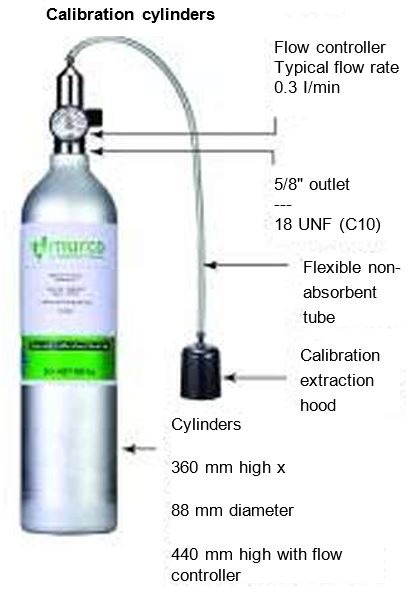
-
- Instalarea corectă a echipamentelor de către instalatori instruiți și calificați.
-
- Service și întreținere anuală a echipamentelor.
-
- Testați funcționarea corectă a dispozitivelor și setați pragurile de alarmă în mod corespunzător (kit de calibrare, aplicație pentru smartphone) pentru a evita pierderile semnificative de agent frigorific.
-
- Testarea și calibrarea cu gazul dorit
-
- Verificați dacă senzorii și alarmele funcționează.
-
- Calibrarea menține precizia senzorului. Este obligatorie în fiecare an în unele țări europene.
7) Avantajele detectării scurgerilor:
– Reducerea cantității de fluid utilizat = economii financiare
– Emisii mai scăzute de gaze cu efect de seră = beneficii pentru mediu
– Consum redus de energie = economii financiare și beneficii pentru mediu
– Performanță îmbunătățită a instalațiilor datorită unei bune etanșări și a unei încărcări adecvate cu agent frigorific
– Respectarea standardelor și reglementărilor (EN 378, F-GAS II, ASHRAE etc.) = siguranță
– Prevenirea scurgerilor = Protecția persoanelor și confort îmbunătățit = siguranță și sănătate
– Conservarea bunurilor și echipamentelor = Economii și siguranță
Acest articol a fost realizat în colaborare de Climalife și Matelex, doi actori cheie în domeniul performanței energetice.

